"Farm exports to the U.S. from Mexico have tripled to $7.6 billion in the last decade, enriching agribusinesses, distributors and retailers.
American consumers get all the salsa, squash and melons they can eat at affordable prices. And top U.S. brands — Wal-Mart, Whole Foods, Subway and Safeway, among many others — profit from produce they have come to depend on.These corporations say their Mexican suppliers have committed to decent treatment and living conditions for workers. But a Los Angeles Times investigation found that for thousands of farm laborers south of the border, the export boom is a story of exploitation and extreme hardship."
Get Started for FREE
Sign up with Facebook Sign up with X
I don't have a Facebook or a X account
 Your new post is loading... Your new post is loading...
 Your new post is loading... Your new post is loading...

Jennifer Lopez's curator insight,
November 7, 2014 10:51 AM
This passage was about the immigration that are coming into Europe. It helped me learn how they get to there destination and the struggles they go through. This scoop also showed me thew amount of money a immigrant would have to spend in or for them to get to their destination. By it showing us statistics i can get a better understanding. Also, the statistics about the amount of immigrants that don't get to even make it to their destination and what they can and cannot bring with them.
Alec Castagno's curator insight,
December 5, 2014 1:41 PM
Due to the vast distances and irregular manner of transportation to Europe, prices are very high with transport between northern Africa and southern Europe often costing more than 1000 dollars. Even traveling from Greece to Italy can cost up to 6000 dollars. Despite the high price to "guarantee access", the journey is still dangerous with 500 deaths over a two month period in 2013. This interactive shows that even though 35,000 seems like a lot of people to arrive in Europe in 2013, it is a very long, difficult, and expensive journey to get there.
Cam E's curator insight,
February 4, 2014 11:55 AM
I enjoy stories like this, because it demonstrates people willing to fight for their home. Many interesting ideas lie behind stories such as this one, but what I find especially intriguing is the dynamics of money in relation to these small rural villages. Money and "income" drives our current economic positions, but there are some places which were left behind and have none of the jobs we in the first world would traditionally think of. They had to either subside off their own products through farming, or trade their livelyhood for a small amount of money. Put simply, money is necessary for a so called "modern" existence, but not necessary for survival. These villagers are working for their own future in their home country now though, while it may not be necessarily profitable in the short term, it will pay off for their children in the long term.
James Hobson's curator insight,
September 23, 2014 11:29 AM
(Mexico topic 1)
Adam Deneault's curator insight,
December 6, 2015 6:39 PM
With a little help from the video, it is clear now, to understand why many Mexican folks are actually not leaving their country for the US. It said in the video that there is not a lot of work in the US and Mexicans like to keep busy. Also, a lot of Mexicans are finding opportunity right in their own country where there once was no opportunity. Electricity reaches the house, they have paved roads and updated pipes. They will need to rely on us for fuel. It is also nice for them to know that they do not need to leave their families behind in Mexico while they go to the US, they can have the satisfaction of working in local fields and seeing family when they get home at the end of the day.
Lora Tortolani's curator insight,
February 2, 2015 6:49 PM
It's amazing to see how priorities have shifted over time. Also, this is a great display of how technology has taken over what once was human labor. 
Alex Smiga's curator insight,
March 14, 2016 7:43 PM
Shifting economies. This interactive map is a powerful way to visually display the changes in the economic geography of the United States. It is especially useful when discussing the transition of an economy from the secondary sector to tertiary sector. 
Olivia Campanella's curator insight,
September 5, 2018 5:02 PM
Over the years the United States has shown a number of leading employer industries. In the 1990"s the manufacturing industry was the leading employer in most United States, followed by Retail Trade industries. In 2003, Retail Trade was the leading employer, but by 2013 health Care and Social Assistance was dominant industries in 34 States. From the 1990"s to 2013 employment has been on a steady decline while Health Care and Social Assistance became largest industries in New York (1992) and North Dakota (1995).

Danielle Bellefeuille's curator insight,
May 10, 2014 6:16 PM
The sad reality of the new division of labor, we are moving backwards instead of forwards with labor policies and widening the gap between core and periphery countries. We need to stand up and advocate for fair trade. These countries rely on us for sources of unemployment, and we need to give them better wages, safer working conditions, and help them push pass this dependency, and grow into more economically and socially strong countries.
Michael Mazo's curator insight,
December 10, 2014 8:03 PM
The triangle shirtwaist factory in New York was a revolutionary turning point in labor regulations. Following this unfortunate event there had been many rules and laws that took effect in order to help the working people in factories and other harmful work places. The textile industry had been such an impact on globalization because this product had been so greatly treasured that countries all around the world were getting their fair share of producing a good that was in such high demand and through the use of globalization transport created an higher demand for textiles. Although, the boom of the textile industry came with the sacrifice of innocent civilians who worked endlessly just to feed their family. Regulations and legislation have to be put into effect to protect our people and our economy.
BrianCaldwell7's curator insight,
April 5, 2016 8:17 AM
One of the first industries to be impacted by what is today called globalization was the textile industry and the successive waves of globalization continue to alter the geography of the textile industry. This video shows how historical problems in the U.S. textile industry are seen today in countries such as Bangladesh, as does this interactive feature. The following paragraph is from a Geography News Network podcast / article that Julie Dixon and I co-authored for Maps101 about the Bangladeshi garment industry: Many developing countries with the majority of their laborers working in agriculture welcome outsourced labor from the West. This is seen as a way to nurture industrialization, even if it is on the terms of trans-national corporations. Countless workers seek employment in textile factories simply because low pay is still an entry into the cash economy and it is one of the few jobs rural migrants can find when they first enter the big city. In such locations, Western labor, construction, and environmental standards are not priorities because the population’s basic needs haven’t been met, so the responsibility falls to the global companies—but their aim is to cut costs as much as possible to remain competitive. From its emergence in textiles back in the late 1970’s, Bangladesh in 2013 made $19 billion in the export-oriented, ready-made garment industry, employing 4 million workers, most of whom are women. Listen to more of this Geography News Network podcast or read it here. Tags: Bangladesh, poverty, development, economic, globalization, industry, labor. |

Built 4 Betterness Ed van den Berg's curator insight,
December 14, 2014 3:17 PM
Not surprisingly the DNA of cities is a follow-up of human DNA and understanding this will explain and predict how the body of a city will develop!
SRA's curator insight,
April 16, 2015 2:10 AM
The idea that cities are just organisms that are satisfying the laws of biology is interesting. Especially because Physicist Geoffrey West brings the idea of Scalability which by definition is, the ability of a system, network, or process to handle a growing amount of work in a capable manner or its ability to be enlarged to accommodate that growth. What’s mind blowing to me is that the system that is referred to here is human interaction. We create these cities through our interaction and experience. With a growth rate of 1,000,000 people every year the math adds up to an agreeable 15% rise in income levels, patents, and super creative people every year which is undoubted a win for civilization and society. But with that we must keep in mind also this means a 15% increase in things like deadly disease, crime, poverty, and ecological issues leading to further degradation of our planet. This unbounded growth means the system is destined to collapse. The math behind cities doesn't lie if we don’t prepare cities have a fate to die like every other organism in Biology. So it is up to us to create and innovate to sustain this growth and avoid the collapse. But we must do so at a forever increasing pace. Which subsequently is also part of another system predetermined to collapse. What I mean is what happens when we cannot innovate fast enough to sustain this growth? - Caleb Beckett
BrianCaldwell7's curator insight,
April 5, 2016 8:14 AM
While corporations rise and fall, it is quite rare for a city to entirely fail as an economic system. Huge cities have some negative consequences, but the networks that operate in the city function more efficiently on economies of scale in a way that offsets the negatives. Increasing a city's population will continue to improve the economies of scale (larger cities have higher wages per capita, more creative employment per capita, etc.). However, this growth requires major technological innovations to sustain long-term growth.
Tags: urban, planning, megacities, industry, economic, scale, TED, video.

Peter Phillips's curator insight,
November 6, 2014 11:43 AM
50 years of communist rule still affect opportunities in Germany today, as these maps show. What they don't show is the social mirror that each provides to the other and the rich discussions about social policy that result. Reunification has been an expensive exercise for Germany, however one that it is committed to.
Jacob Conklin's curator insight,
February 12, 2015 6:20 PM
The Soviet Union collapsed in 1991, but its influence is still present in today's Germany. History plays a key role in the shaping of political boundaries and that history is clearly evident in Germany. The line where the Berlin wall once stood still divides the country economically. The western part of Germany is far more economically affluent than the east. The USSR may be gone, but its influence still remains.
BrianCaldwell7's curator insight,
April 5, 2016 8:14 AM
These two maps (unemployment on the left and disposable income on the right) are but two examples in this article that highlights the lingering distinctions between the two parts of Germany that were reunited 25 years ago. The social geographies imposed by the Iron Curtain and the Berlin Wall are still being felt from this relic border and will for years to come. Tags: Germany, industry, labor, economic, historical, political, borders.
Macy Nossaman's curator insight,
September 20, 2013 2:26 PM
This is a good article about immigrants in America because it talks about all of the different places people have immigrated from and now live and work in the U.S. Since my topic is European Immigration, It shows that there are 2.4 million Europeans currently working in the U.S.
Laurel Stelter's comment,
September 27, 2013 2:23 PM
I think that this is a really interesting article. The two pictures really help define America and its workplace well. It surprised me how many people weren't born in the U.S., but still work here.
Wilmine Merlain's curator insight,
October 6, 2014 3:45 PM
When it comes to deportation, its usually a loss win situation. But in the case of Mexicans who once lived a life on US soil from since birth and having been deported later on in life, adjusting to a new life in a new world is challenging. The comfort of being able to work in an environment that reminds them of being back home eliviates the agony of being separated from their family back in the US. The outsourced phone companies give these deported individual an opportunity to be able to participate in a life they once lived by being able to interact with Americans. While they make subsequently less than what they were making in the states, the opportunity of being able to work in a foreign land is one that they are forever grateful for. 
Hector Alonzo's curator insight,
October 14, 2014 10:49 PM
This article is similar to the topic of outsourcing jobs to the United states, only it is the reverse, with deportees being giving jobs at call centers in the city of Tijuana. It brings up the topic of culture shock and the differences between Mexican and United States Economies. 
Brian Wilk's curator insight,
March 28, 2015 3:33 PM
Brings to mind the whole debate over over illegals vs. legals, work visas and work permits, political change and citizenship. So many factors are present in the decisions these Mexican born, living in America, deported back to their home country, must make. How culturally shocking it must be to be living the American Dream in an area that is bi-lingual, San Diego, and be deported back to Tijuana, making $150 a week. It's a blessing and a curse for both sides of the border. The USA loses tax revenue from the money Henry was bringing in while working in real estate, conversely Mexico gains a smaller slice of the tax given his drop in pay. He clearly was happy and productive here, but others such as the gang member mentioned, may make the USA happier by taking his gang affiliation with him. Not good for Mexico, but perhaps he can make a fresh start in that country.

Sarah Cannon's curator insight,
December 14, 2015 9:58 AM
Besides that scrap metal pollutes water and rivers, this is a health risk for humans too. I also know someone who worked at Electric Boat at the Air Base in North Kingstown who's health was also affected due to metal scraps and particles in the air. Years later after working at EB he developed lung cancer. Metal erodes away as well, especially when left sitting in salt water.
Benjamin Jackson's curator insight,
December 14, 2015 11:54 AM
this is both amazing and horrifying in what these people do on a daily basis. i cannot imagine doing what these guys do everyday, and i never imagined how taking apart one of these ships would work.
BrianCaldwell7's curator insight,
April 5, 2016 8:16 AM
What happens to massive cargo vessels after they are outdated? There are tons of scrap metal, but they aren't designed to be taken apart. The ship-breakers of South Asia (Bangladesh, India and Pakistan are 3 of the 4 global leaders in recycling ships) risk much to mine this resource. This is an economic function that is a part of a globalized economy, but one than was never intended. There are major health risks to the workers and pollutants to the local community that are endemic in this industry that manages to survive on the scraps of the global economy. Tags: Bangladesh, South Asia, poverty, development, economic, globalization, industry, labor. |





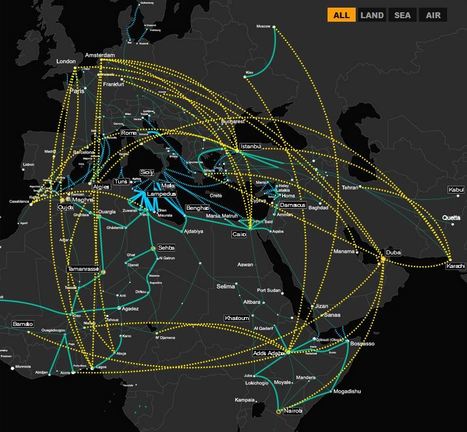
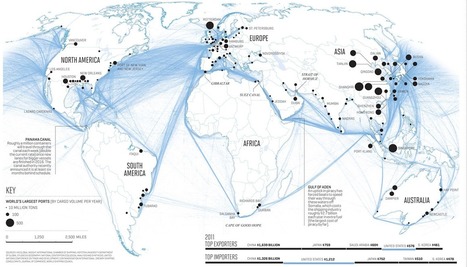



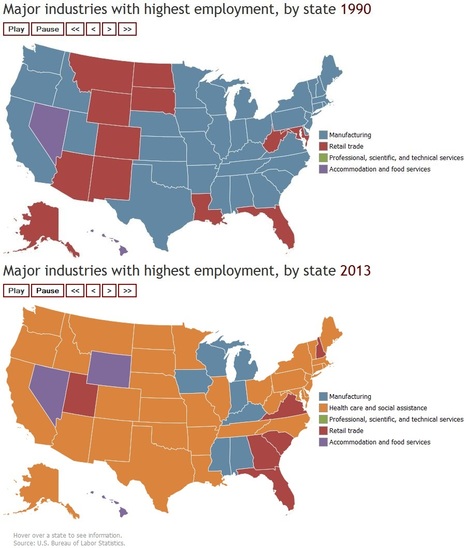
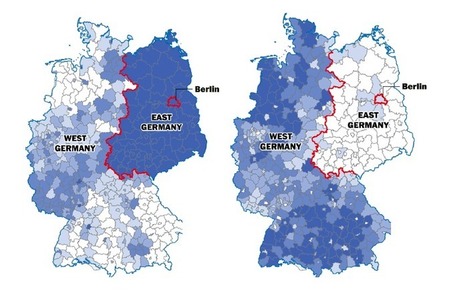
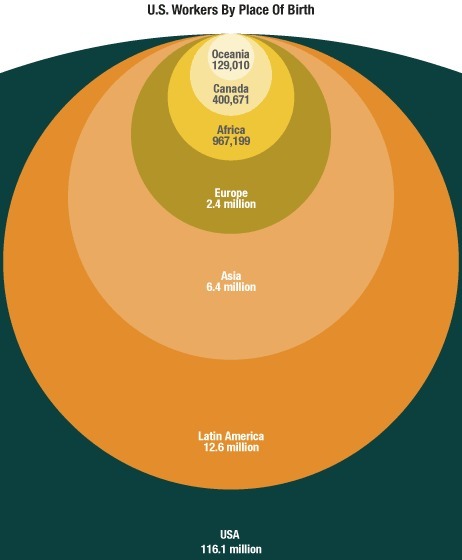

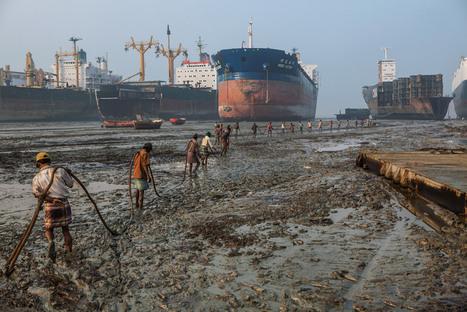





we work the fields for our families.
It’s crazy to see how desperate some of these people are to get working and how much they do for such a little reward. These people are working longer and harder than probably all Americans and they are barely surviving. They work for survival. It’s hard for some of these people to stay healthy, especially in the harsh conditions and tight living spaces that these people have to deal with on an everyday basis.
Corporations are always looking for the cheapest base product to import. Unfortunately for the laborers of Mexico, their country does not enforce globally accepted standards of labor. The US cannot police other countries' policies and procedures, but we can educate our own consumers about the working conditions behind the product they buy. The consumers then have a choice; do they want to pay 49 cents a pound for bananas or 99 cents. What is more important, the health and welfare of the employee who picked the produce or the financial well-being of the consumer who purchases it?
This obviously is big business for Mexico and the US should apply some pressure to motivate our friends south of the border to foster better working conditions for their employees. It would seem to me that Mexico could afford to pay their workers a little more and still be competitive given their proximity to the US. I think I will start buying my bananas from Ecuador....